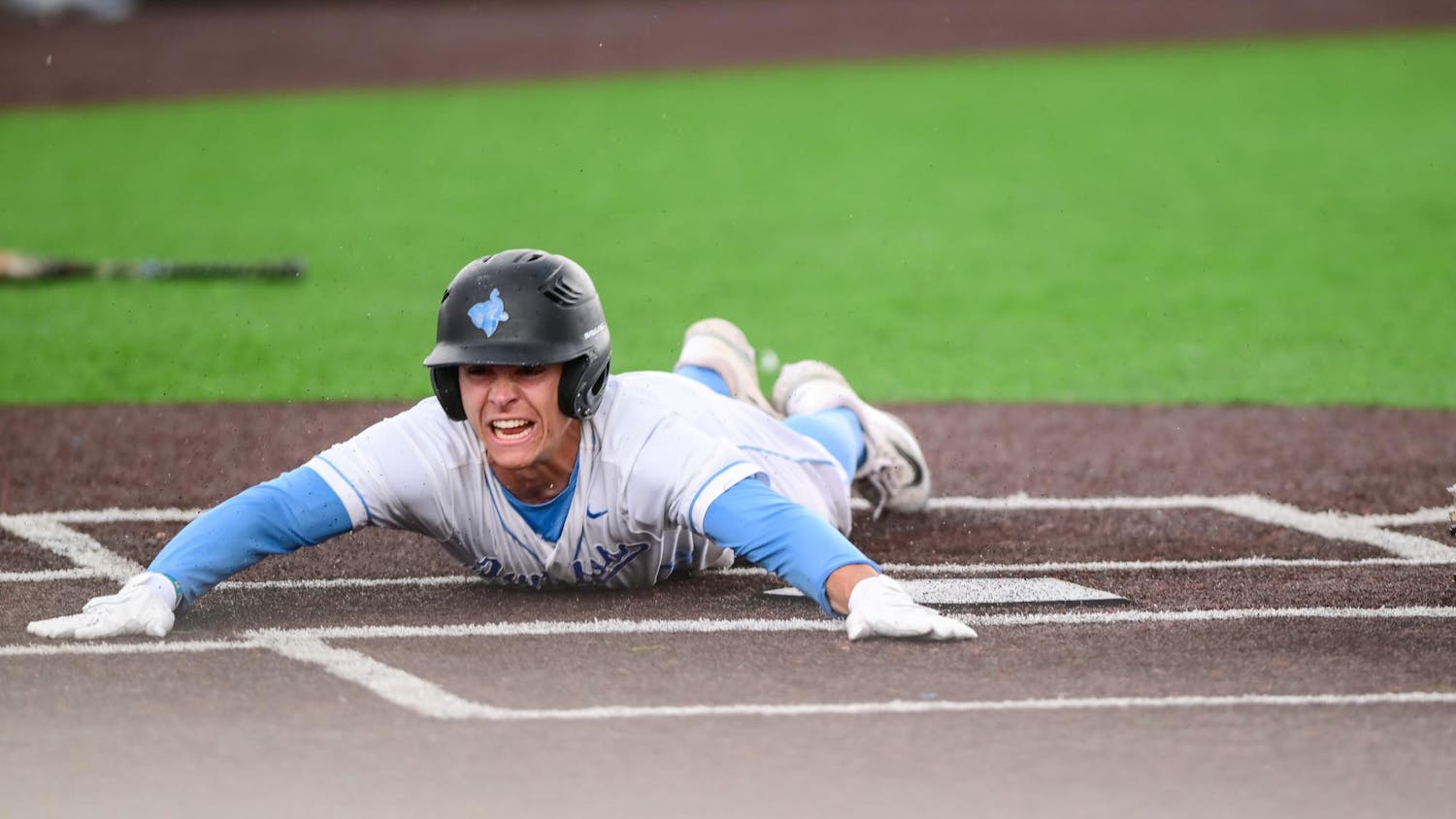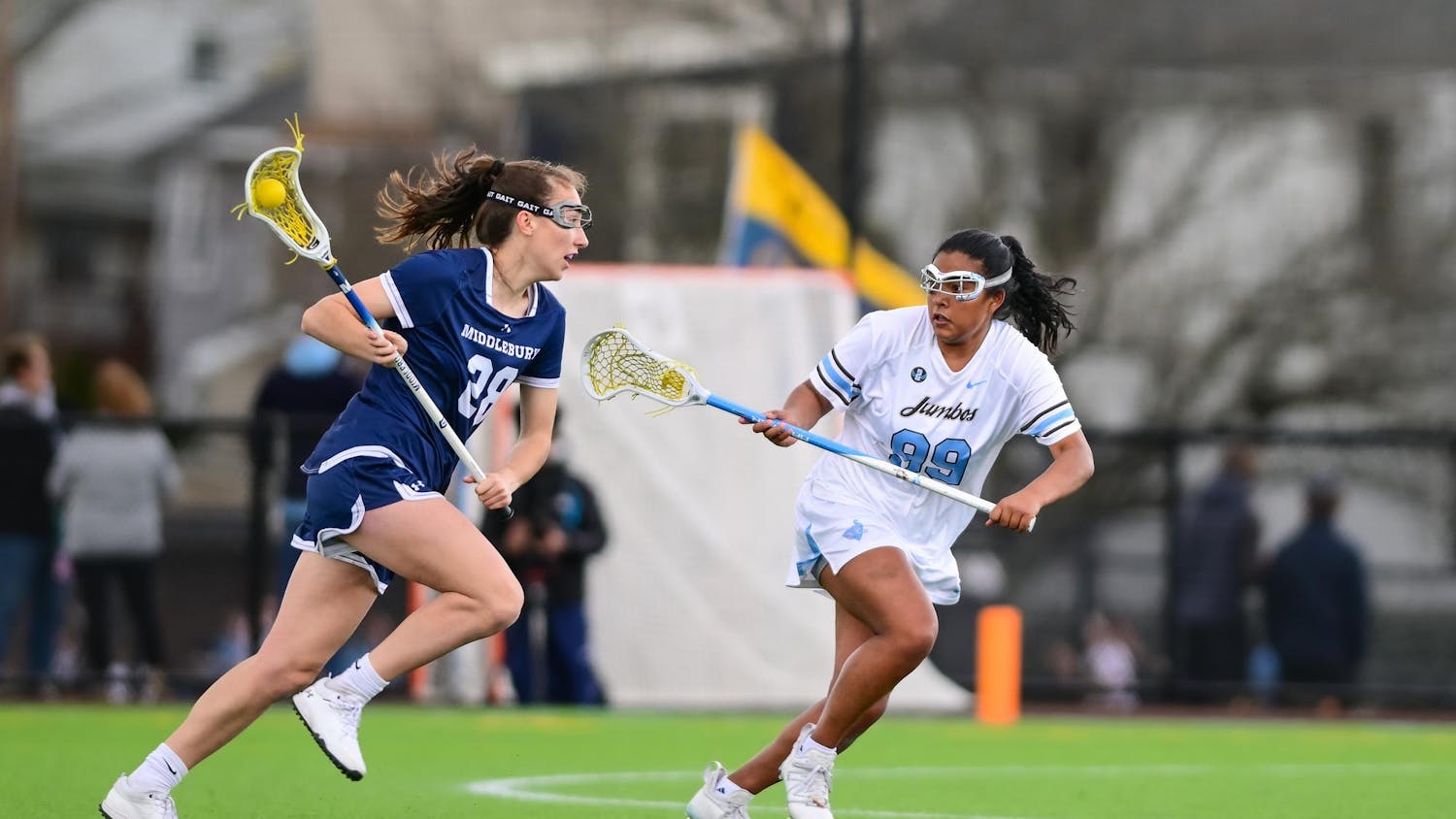Often on sports teams, a large influx of rookie players heralds an era of rebuilding while the recent additions find their way around a new program in a new environment.
But for the women's crew team this fall, an uncharacteristically large crop of experienced freshmen rowers presents a different situation as the Jumbos prep for their first race of the fall season at the Quinsigamond Snake Regatta on Lake Quinsigamond in Worcester, Mass. this Sunday.
"The freshmen all have experience, so they bring a whole new level of competition to the team that didn't really exist before," senior co-captain Kaitlyn Mula said.
"Looking at the varsity squad, we have 16 experienced freshmen rowers and an experienced freshman coxswain, compared with five incoming experienced rowers last year, so it's triple the number compared to last year," coach Gary Caldwell said. "Then there are eight or nine people from last year's novice squad who rowed separately from the varsity, and then I had 17 upperclassmen athletes returning too.
"So trying to figure out where everybody sits on the hierarchy chart is going to take some time this fall," he continued. "Things will change over a period of time; a lot of these freshmen are relatively underdeveloped compared to the upperclassmen who have been through our training program for one, two or three years, so it's going to take some time to see what kind of growth they can have. Right now the coaching staff's job is to get everyone understanding how the program works and getting everyone invested in the program."
With so many athletes on the squad right now, Tufts hopes to use the autumn season, which has fewer races and places less emphasis on results than the main spring portion of the year, to both assess how to set the different crews for each boat and address some necessary base conditioning before offseason training in the winter. Fall regattas tend to be on the longer side, at about 5,000 meters, compared to spring races that correspond more to a sprint at a distance of about 2,000 meters.
"[The fall] is definitely to set a base cardio because it's such a longer distance, so our practices are longer, we are working and doing more outside of practice ... to set that base for the spring because the spring races are more of a sprint," senior co-captain Steph St. Thomas said. "Especially since we have all of these new rower freshmen, we've had to backtrack and teach everyone how to do it again because in the past we've had, say, two freshmen come in and pick it up, so we've been spending a lot of time working on technique, sort of showing them how we row at Tufts, getting them more acclimated to the program."
"[The] fall is a really good time to get your technique in the water down," Mula added. "Most rowers don't go rowing every day in the summer, so it's a good time to get back in the swing of things."
And with nine veteran seniors graduating from last year's roster, St. Thomas said there's a definite adjustment to be made, but that the current upperclassmen will step up to lead Tufts and guide the newcomers as they learn the program.
"The biggest challenge is this new team dynamic and getting the freshmen to push the bar and be at the same level that all those seniors were at," she said. "In the varsity [boat] last year we had two juniors, one freshman and the rest were seniors, including our coxswain.
"But we've been really impressed with how well the seniors now have continued to push everyone else and set the standard really high," St. Thomas continued. "The freshmen really came in and they've been ... ready to go and have a great work ethic, and we've been really lucky that while the dynamic has changed, it's definitely not for the worst."
Following an alteration to the autumn racing schedule that had crew opt out of competing this past Sunday with the men's team at the Textile River Regatta, the Jumbos have three races scheduled for the fall -- the Snake on Sunday, the annual Head of the Charles Regatta and the Head of the Fish over the subsequent weekends -- where they will get to put several weeks of team practice into action.
"What's great for us is that it does relieve the boredom of fall training; it gives the student-athletes something to focus on, and in some respects it gives you an option to test yourself against people from other schools," Caldwell said. "From a coach's standpoint, it gives me an opportunity to see with new people every year how [they] react to the competitive environment."
"The Snake is going to be a really good test to see how permanent the changes we've been making on the water technically have become," Mula said. "It will be interesting to see if we can make those changes permanent in a stressful race environment. All things that happen in practice by the time they come to races should be automatic."
Indeed, fall training and races provide the new rowers the chance to resolve their level of commitment to the crew. With rigorous training and relatively few opportunities throughout the year for competitive racing, it requires sizable dedication.
"One of the neat things about this place is that we promote all of these diverse co-curricular activities that students can be involved in," Caldwell said. "The hardest thing for students is making choices about two or three things they do well rather than dabbling in four or six things.
"So part of what's going on now in anticipation of the women's first race is you have this large group of freshmen for whom understanding how to make these decisions is just coming to fruition now," he continued. "They're figuring out how to budget their time, and they're figuring out how much importance there is to what we're doing in the weight room; they're trying to find their place in the program. A lot of what is going on now is that social/sport hierarchy reestablishing itself and people figuring out competitively where they fit in."





